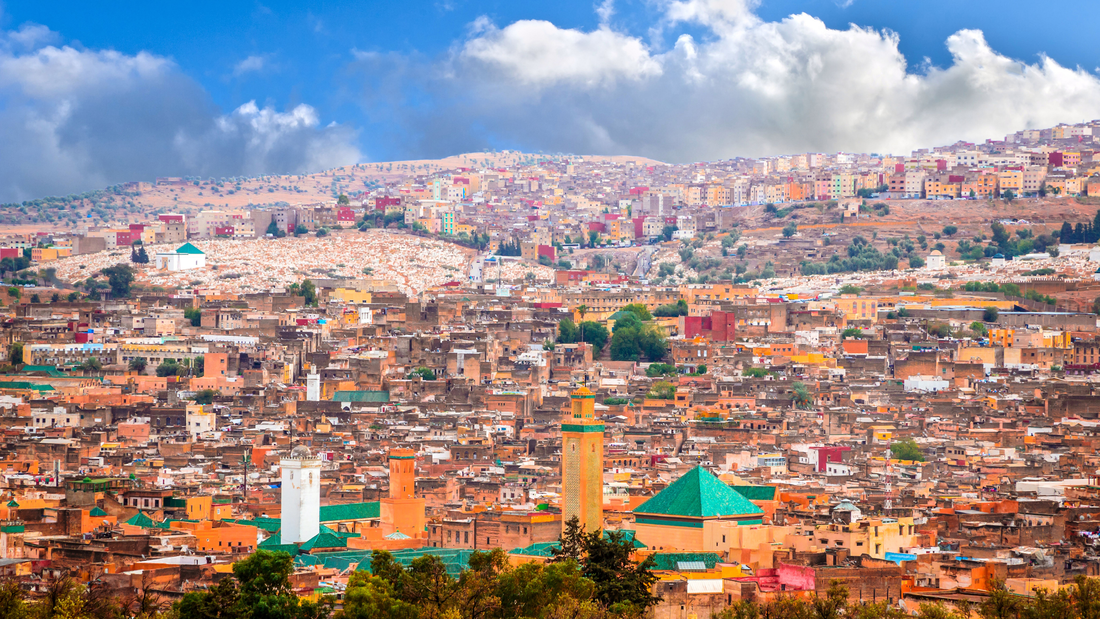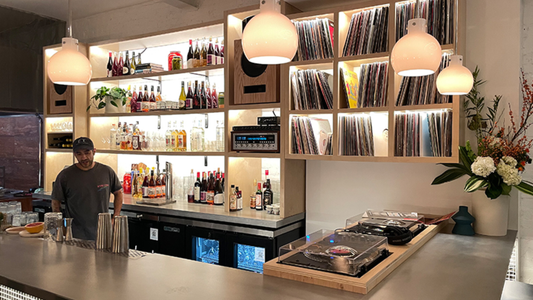
Packing for Marrakech
Packing for Marrakech
By Amelia Fairfax
There’s always that moment before a trip when your suitcase becomes a mirror. Every choice feels like a confession: who am I this week? What do I want to feel like when I land? I was sitting on the floor surrounded by piles of linen, half-folded silk, and far too many pairs of trainers, trying to imagine Marrakech through sound and fabric at once. Rafi had already messaged twice about headphones — something about impedance, open-back versus closed-back, a debate that could last a lifetime. I just wanted to know whether my hair would survive the desert air.
Travelling with Rafi is its own kind of adventure. He listens his way through the world. Every street corner becomes an acoustic test; every café a possible essay. We once missed a flight because he got lost in the sound of rain hitting a metal awning. I adore him for it — that restless, tuned-in curiosity — but I also know what it’s like to trail behind him while he records the hum of a market fridge because it “sounds like early Brian Eno.” Marrakech will be a dream for him: a symphony of call to prayer, motorbikes, and brass coffee pots ringing like chimes.
My role, I suspect, will be to notice what people are wearing while he listens to what they’re hearing. I’m already picturing it: the ochre of the medina walls echoing against indigo scarves, sandals dusty with spice, tailoring re-imagined in loose linen cuts. Moroccan style has that balance I love — elegance without effort, structure softened by light. I’ve packed my white cotton shirt that looks better creased, a long skirt that catches every breeze, and my vintage Gazelles because I can’t travel without them. If I’ve learned anything from fashion, it’s that comfort doesn’t have to kill style.
There’s also the small matter of Rafi’s world-building — the guide, the essays, the endless notes he collects. He’s creating something vast, this Tracks & Tales universe, mapping the way we listen and live. I can already see him in the riad courtyard, notebook open, eyes closed, absorbing the echo of water on tile. He’ll talk about resonance and stillness, and I’ll pretend not to be jealous of how fully he disappears into it. For me, fashion has always been more visible — louder, lighter, faster. But lately I’ve been learning from his tempo: slowing down, choosing less, letting the small details breathe.
I’m packing my Beoplay headphones, naturally — Rafi wouldn’t forgive me if I turned up with anything else — and a playlist of Nina Simone, Khruangbin, and a little dusty soul for the evenings. There’s something about travelling with music that makes every place expand, like it’s waiting for you to press play. I can already hear the sound of the souks blending with whatever track he’ll insist we listen to over mint tea. He’ll call it “field research.” I’ll call it foreplay for a good idea.
When he flies home, I’m staying on for a few days of R&R — rest and retail. Marrakech does both beautifully. I want to wander the textile stalls in the souks, the ones tucked behind the tourist trail where the fabrics hang heavy and the air smells of dye. I’ll look for something made by hand, something that holds the light of that place — maybe a woven shawl, maybe a pair of sandals that will ruin my packing plan all over again. There’s a small shop in Gueliz that sells reworked vintage French pieces; I’m told the owner used to style Paris runway shows before moving back home. That’s my kind of pilgrimage.
Trips like this remind me why I fell in love with fashion in the first place. Not the schedules or the shows, but the way clothes let you carry a place home with you. Rafi will bring back field notes and sound recordings. I’ll bring fabric, colour, a bit of Marrakech stitched into my suitcase. Different souvenirs from the same story.
As I zip up my bag, I think about how travel always blurs us — the listener becomes a little more visual, the stylist a little more still. Maybe that’s the point. He’ll talk, I’ll watch, and somewhere between sound and silhouette, we’ll find the same rhythm.
— Amelia Fairfax







